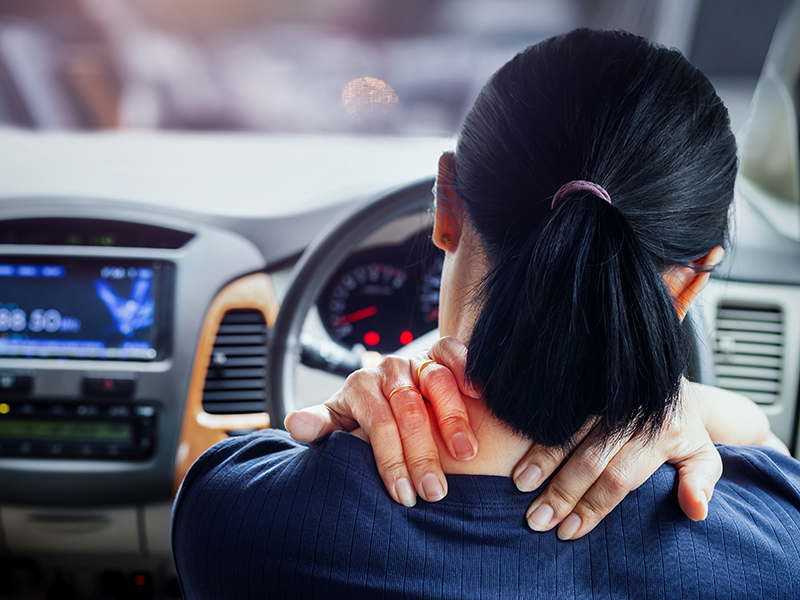Search
Find a Physician
Blog
Dec 6, 2019
At some point in our lives, 80 percent of us experience back pain. When you leave home, back pain doesn’t take a vacation. From hoisting a heavy carry-on into the overhead bin, sitting for hours in cars, buses, trains and planes, and sleeping in a new (possibly uncomfortable) bed, holiday travel can be hard—especially on your back.
Don’t let back pain stop you from celebrating the season. These holiday travel tips from orthopedic spine specialists at the Orthopedic Institute of New Jersey (OINJ) can you help enjoy the journey—and the destination—by preventing back pain and stopping the onset of a back attack in its tracks.
1. Make frequent pitstops. When traveling by car, take a route with rest stops, such as a major highway, and plan for breaks at least every two hours. “Sitting for long periods compresses your back’s disks, which are meant to cushion vertebrae,” says Dr. Behnam Salari, an OINJ orthopedic spine surgeon. Taking standing breaks can relieve pressure on the disks. While you’re at it, put your hands on your hips, look up at the sky and arch backward to counteract the sitting’s forward flexion posture, Dr. Salari says.
2. Lift and carry safely. Choose a suitcase with wheels, even if you’re packing for just a few days. At the baggage carousel, make sure your suitcase is in front of you and bend your knees before lifting it off the conveyor belt. Lifting a heavy object overhead is never a good idea, but when you travel, it’s often unavoidable. “When lifting your carry-on into the overhead bin, reduce the stress on your arms and shoulders by focusing on keeping your shoulder blades back and down as you lift,” Dr. Salari says. If your bag is extra heavy, ask a flight attendant to help you.
3. Give your spine support. Your lower back naturally curves inward, but most chairs, including your car’s seat, cause it to round out, which can throw off alignment. “Cushioning your lumbar is the key to maintaining your spine’s neutral curvature,” says Michael Gundell, P-AC an OINJ back pain specialist. In a car or a public place, scoot all the way back in your seat and wedge your coat behind you to form a make-shift lumbar pillow. “Once your low back is supported, your neck and upper back will stay in proper position,” Gundell says.
4. Take anti-inflammatory medication. If your back starts hurting, pop an over-the-counter pain reliever, such as Advil (ibuprofen) or Aleve (naproxen) as soon as the pain starts. “Anti-inflammatory medication helps relieve pain and the inflammation that’s underlying the muscle pain or injury to the discs—the soft pads between the vertebrae of the spine,” says Dr. Michael S. Gutkin, an OINJ physiatrist.
5. Stay at a hotel. A mattress that’s too soft or too firm can lead to back discomfort. If you’re staying at a relative’s house or an AirBnB, you don’t have much say over your sleeping accommodations. If you can, consider staying at a hotel where you know the beds are comfortable and back-friendly.
6. Exercise your options. If your back starts hurting, move around and walk as much as you can. While waiting for your flight, for example, take a walk in the airport. “Walking can help relieve pain and promote healing by increasing blood flow to the injured area,” says Dr. Christian Castro, an OINJ physiatrist. When you get to your destination, apply an ice pack to your back. Compared to a heating pad, “ice is my first choice because it helps relieve pain and inflammation,” Castro says.
At OINJ, we’ve got your back. If you have back pain, call us at for an evaluation at (908) 684-3005.
